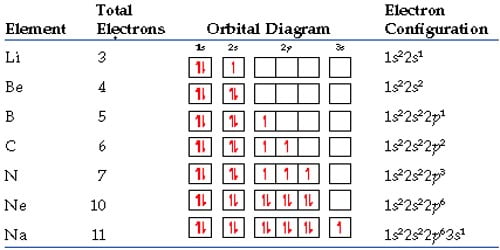
#Atomic orbitals and electron configuration free
In the same Table 1 are also reported the zero-order orbital energies ε 4s 0 and ε 3d 0 of the 4s and 3d orbitals and the zero-order electronic energies E (0)( 2D) and E (0)( 4F) for the 2D and 4F states of free scandium atom. The 4s,3d exponents ζ nl and the coefficients of the 3d linear combination are reported in Table 1. Accordingly, in our calculations, the 4s atomic orbital of Sc has been chosen as a single Slater atomic orbital, exponent chosen as by Clementi and Raimondi, (18) while the 3d atomic orbital has been represented by a linear combination of two Slater orbitals, using the Richardson et al. The XP-PCM decomposition of the pressure through eq 15 has a different aim: analyzing the Pauli repulsive interaction ensuing on compression and its effect on atomic energy levels and configuration energies and, correspondingly, atomic volumes and electronegativities.Įarly on in the history and lore of using Slater orbitals, it became clear that it is acceptable to use a single Slater function for simulating the distance falloff of the true atomic orbital, but that one needed a so-called double ζ nl function, effectively a linear combination of two nd functions, to capture the shape of an nd orbital. This CP distribution is then exploited to analyze the interatomic interactions determining the structure of the material. However, the key (and fruitful) idea of the CP approach is to partition the internal pressure into a pressure distribution (i.e., a scalar field) in the space occupied by the atomic constituents of the compound. In both the CP and XP-PCM methods the internal pressure is computed as the negative of the derivative of the electronic energy with respect to the volume occupied by the material system (i.e., the unit cell volume in the case of the CP method and the volume of the cavity for XP-PCM method). In the chemical pressure (CP) method, the definition of macroscopic (or internal) pressure p is equivalent to the pressure defined with the XP-PCM model (as we can see by comparison of eq 4 of ref (17f) with eq 3 of our paper I).

Before we leave our general considerations, we need to differentiate our approach from that of Daniel Fredrickson and his group, (17) who have introduced a concept of chemical pressure as a determinant of structure in intermetallics and other inorganic compounds.


 0 kommentar(er)
0 kommentar(er)
